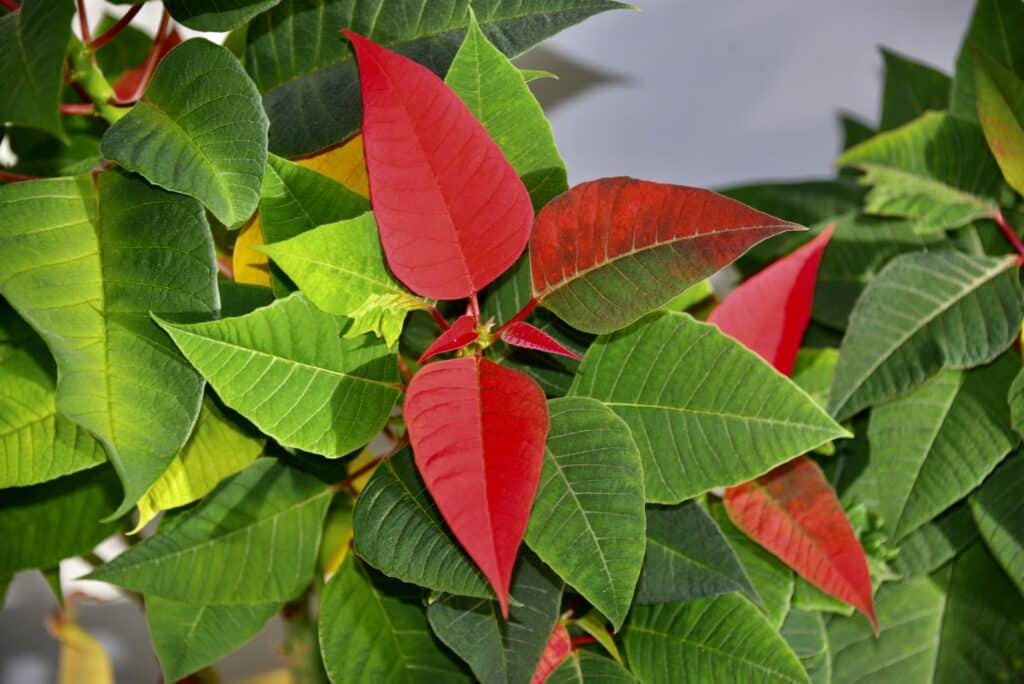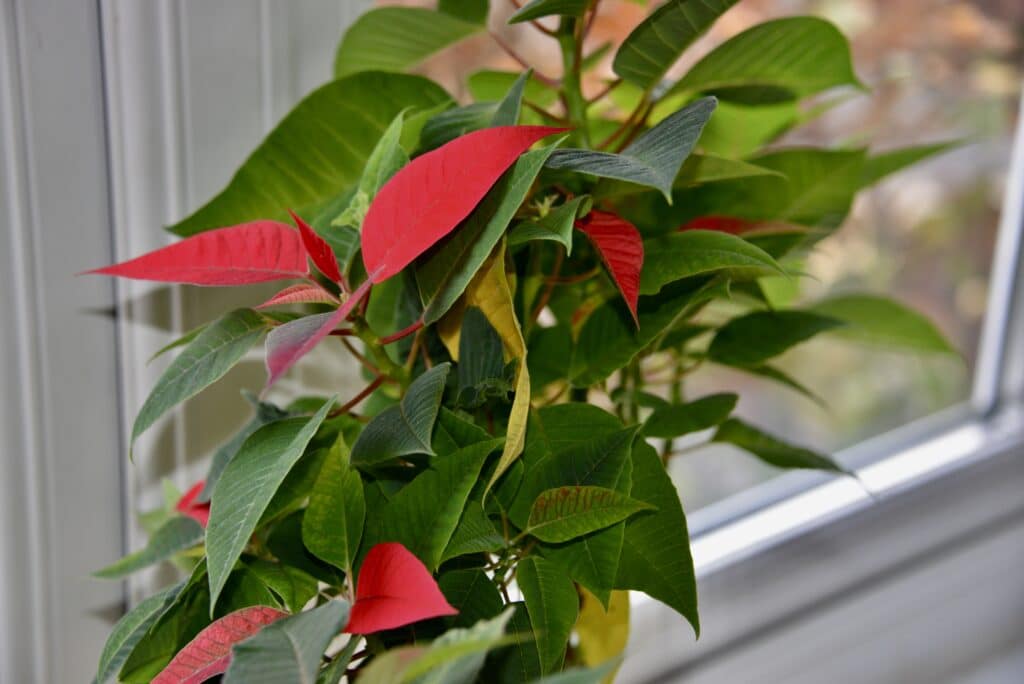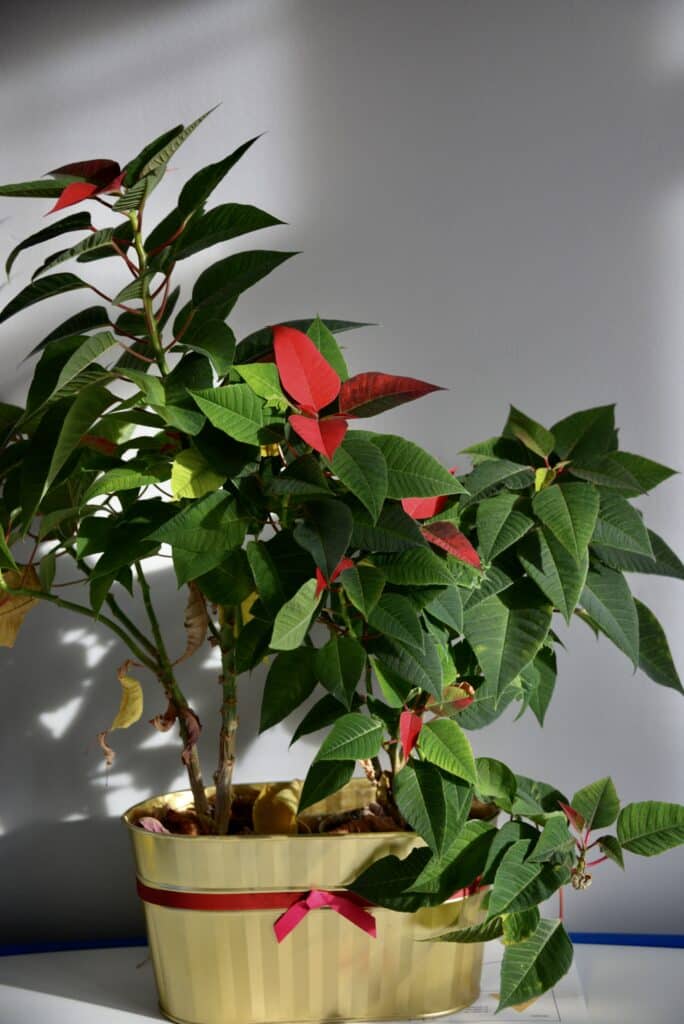Poinsettias are lovely house plants often sold around Christmas time. They have dark green leaves and red ‘bracts’ surrounding the flowers in December and January. Bracts are specialised leaves. After January, the red bracts fall out and the plant is green until the next November/December.

Poinsettias need to be kept in bright conditions and not overwatered.
How to make poinsettia turn red
Poinsettias only form flowers when they don’t receive light for at least 12 hours a day, but they also need bright light during the day so they can make enough energy to grow.
Poinsettias are photoperiodic. The longer periods of darkness in winter stimulate the formation of flowers. The red bracts don’t contain much chlorophyll ( responsible for the green colour of leaves ) but contain pigments called anthocyanins, giving them their bright red colour.
To encourage a poinsettia to turn red, you must ensure it is in total darkness for 12 hours each day. Poinsettias are originally from Mexico, so if you don’t live in a particularly humid country, spraying them with water can also help.
If you have a poinsettia with lots of red leaves, a poinsettia pH indicator can be made by boiling the leaves in water.


Last Updated on December 30, 2022 by Emma Vanstone

Leave a Reply